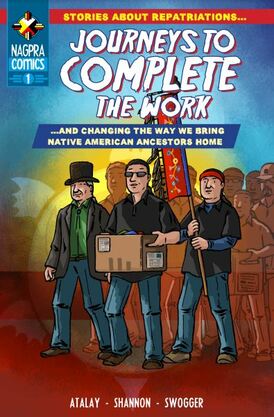
Corwen & Oswestry – Week 26 of the Oswestry Heritage Comics
Heritage binds together places as well as people. Oswestry does not sit in a little historical bubble – it is linked through people and events to places near and far. Corwen, sitting on the other side of the Berwyns, down the River Dee, seems a long way away from Oswestry – and yet, the heritage of the two towns is linked.
I’ve been working with the Corwen & Dee Valley Archaeology Society (CADVAS) as part of the public outreach we’re doing as part of the Oswestry Heritage Comics project. The Society – an active and enthusiastic group – is keen to raise awareness about the heritage of their town, and undertake new archaeological work that could shed further light on its prehistoric and historic past.
Most of us around Oswestry will know Corwen as a town you pass through on your way out of Llangollen if you’re heading towards Bala or Betws-y-Coed. Indeed, Corwen was a well-known stop on Telford’s London-Holyhead road during the eighteenth century, and luminaries such as the artist Turner are known to have stopped in the town – Turner in 1808 to sketch and eventually paint the view across the Dee at Corwen. The Romans, too, may well have passed through Corwen, en route perhaps to Anglesey, where in AD 60 or AD 77. If so, they may well have marched from a temporary staging post at the Rhyn Park camp, just outside Oswestry (excavated by the Oswestry and Borders History and Archaeology Group in 1977, and featured in the Oswestry Heritage Comics earlier this summer). A roman roof tile of the XXth legion – based at what is now Chester – was found in the town in 1977, and the remains of a building uncovered in the centre of town in 1909 were said to be Roman (although this identification is by no means certain, and this is something CADVAS may try and investigate further).
But Corwen’s most dramatic connection with Oswestry comes during the English-Welsh wars of the 1400s. Owain Glyndwr proclaimed himself King of the Welsh in 1400 at Corwen, and gathered his troops together under the ancient fortifications of Caer Drwyn, the iron age hillfort just outside the town. Meanwhile, the English King Henry II gathered his troops together at Oswestry. For the next fourteen years, Oswestry and Corwen sat on opposite sides of a bitter border war. But that border may not always have meant conflict. Back in prehistory, in the iron age, the communities at Corwen and Oswestry built great hillforts. These were centres for festivals and trade, where ideas and crafts were traded, and people made alliances and marriages – linking Corwen and Oswestry together as neighbours, rather than as enemies. In the Christian era, the worship of early saints – St. Oswald in Oswestry, and St. Mael and St. Sulien at the church in Corwen – would have brought pilgrim travellers to both places.
Canals and railways, warfare and roads, invasion and rebellion, tourism and trade, heritage and religion – all these things link Oswestry to Corwen. Corwen is one of those places – like Prees Heath, which has also featured in the comics – whose local history fills in the gaps of the story of Oswestry. It’s a great reminder that the past binds us all together – that sometimes we share more than we realise, and are connected in ways that we might have forgotten.











